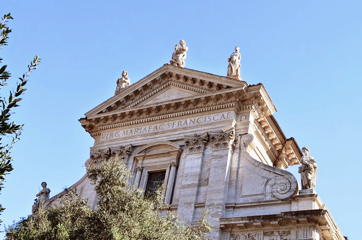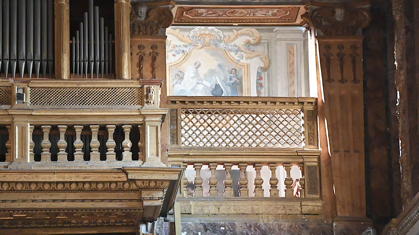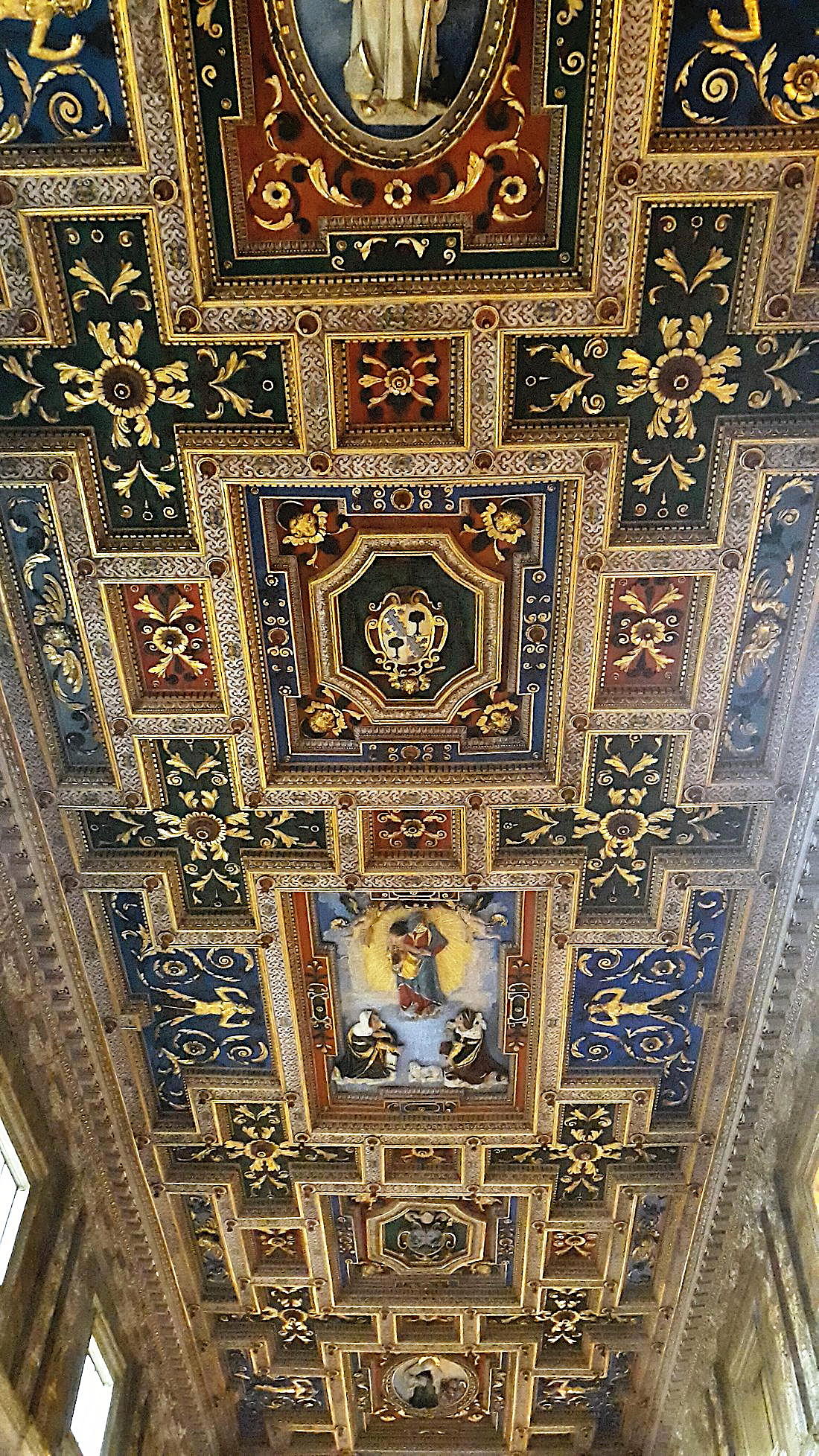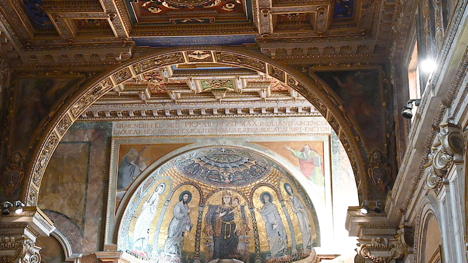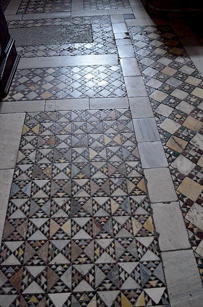Santa Francesca Romana or
Santa Maria Nova is a 10th century titular church and minor basilica, formerly monastic, in the rione Monti (I). The basilica is on the north side of the Via Sacra of the Roman Forum, on top of the ruins of Hadrian's
Temple of Venus and Roma and on the summit of a little hill anciently known as the Velian. The dedication is actually to the Blessed Virgin Mary, with a secondary dedication to
St Frances of Rome.
For reference, a plan of the church is available
here.
The nearby church of Santa Maria Antiqua fell into disrepair and was abandoned in the mid 9th century. In the reign of
Pope Gregory V (996-9) the old title of Santa Maria Antiqua was finally transferred to the oratory of Saints Peter and Paul which was henceforth known as Santa Maria Nova. The old oratory was rebuilt as a church between 847 and 996, with its back wall on the line of the stairs of the stylobate of the ruined temple.
Pope Alexander III (1159-1181) ordered a restoration, which involved the provision of the surviving apse mosaic, the building of the fine Romanesque campanile and the rebuilding of the convent. The church was re-consecrated in 1161.
In 1352
Pope Clement VI entrusted the church and attached building to the Benediectine monks of Monte Oliveto. The Olivetans, named after Monte Oliveto near Florence, was a late reform of the Benedictine monastic life, started by
St Bernard Tolomei.
St Frances was canonized by
Pope Paul V in 1608, and this was a spur to the monks to refit the church. The interior remodelling and the addition of the spectacular wooden ceiling in 1612 was supervised by
Carlo Lombardi . The entrance façade to the design of Lombardi was added and completed in 1615. The confessio was built, and the saint's body enshrined in it in 1638. As a result, the church gained its secondary dedication and its usual name. The confessio containing the saint's shrine was re-modelled in 1858, and the church interior was restored in 1953.





